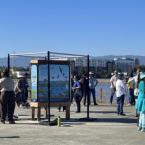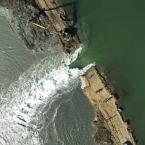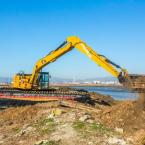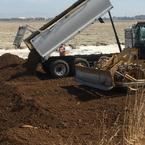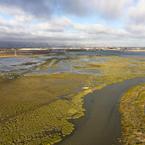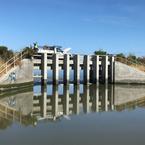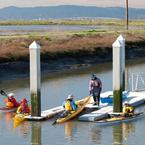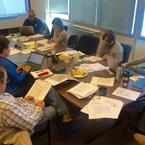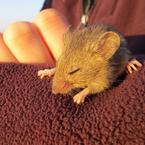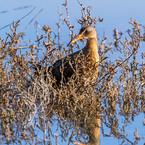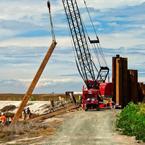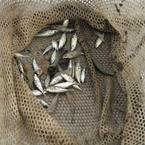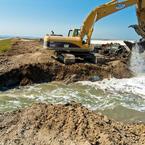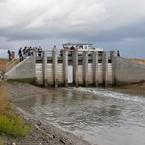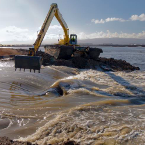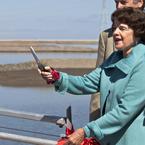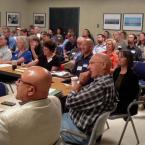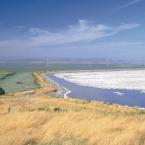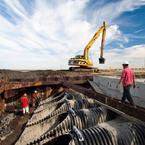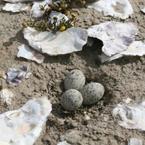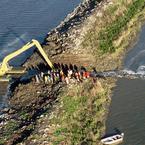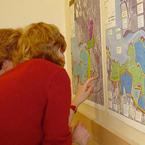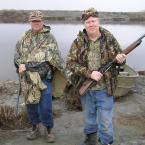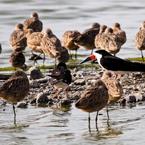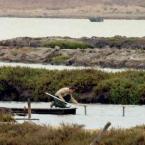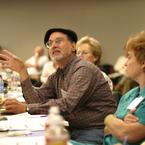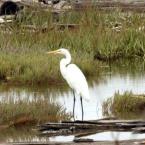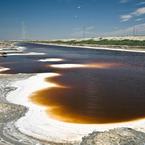Current Work
Find out about construction now underway at our Current Work page.

Measuring Progress
In 2003, we launched a 50-year effort to restore South Bay wetlands, expand Bayside public access and provide for flood management.
Here is what the Restoration Project has accomplished to date:

Progress in Pictures: Before & After
Tidal Marsh Restoration
Island Ponds salt flat to wetlands, 2002 – 2012

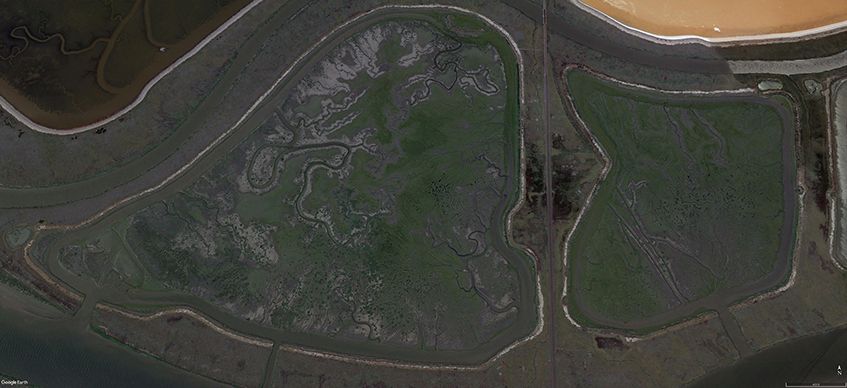
Island Ponds salt flats to wetlands close-up, 2005 - 2015


Island Ponds mudflat to vegetation in one year, 2008 – 2009
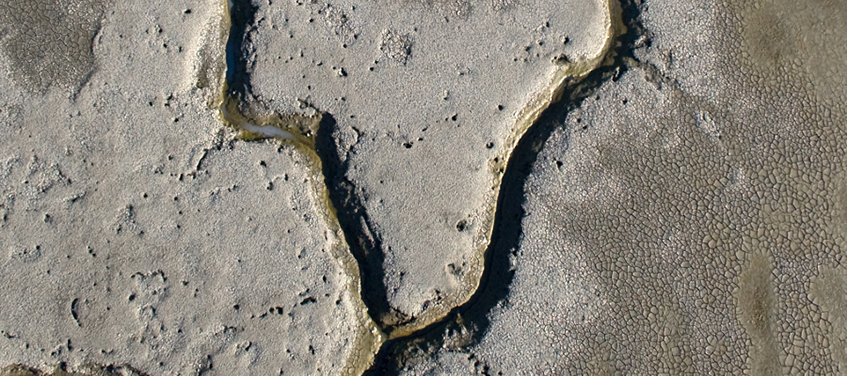
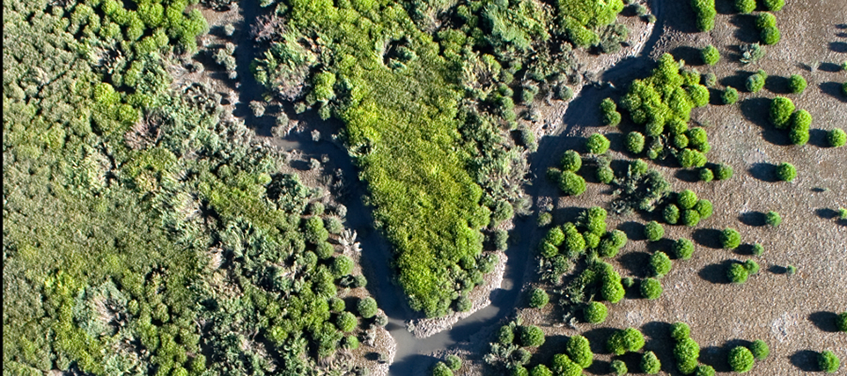
Habitat Enhancement
Our habitat work also optimizes salt ponds for waterbirds and shorebirds, altering water levels and salt levels and adding islands and mounds.
See the changes as we turned acres of salt-crusted moonscape at Ravenswood’s SF2 Pond to a wet pond with 30 nesting islands for birds:
Ravenswood Pond SF2 salt flats to nesting islands, 2008 - 2015
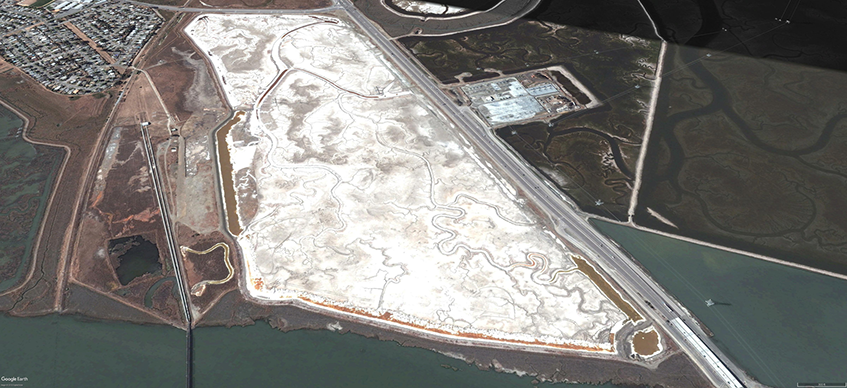
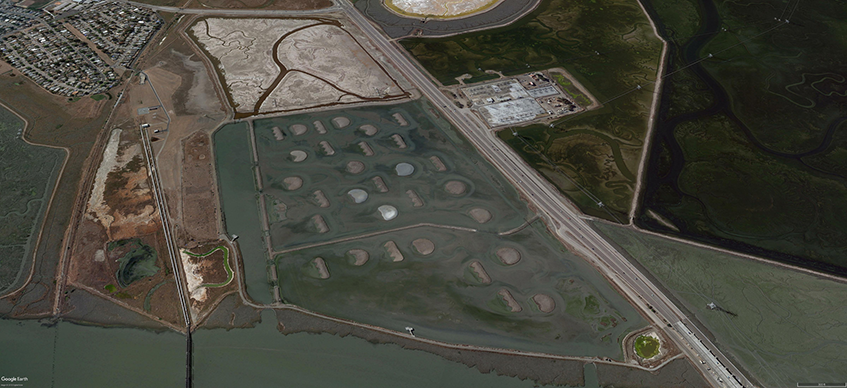
Restoration Project Milestones
View our progress over the years.
-
-
-
2021
Island Ponds: workers breach and lower levees to further open ponds A19-20 to tides and speed salt marsh growth.
-
-
2019
Managers finalize plan for Eden Landing Phase 2 restoration, recreation and flood protection construction
-
2017
Managers open all 8 gates to Pond A8, a step toward restoration, after scientists conclude the tidal opening won't harm wildlife in an area of toxic mercury-laden mud.
-
2016
A kayak launch and 3.8 miles of new trails open to some of the Bay's oldest salt-making ruins: the 19th Century Oliver Saltworks ruins and Archimedes screws, old windmill-like water pumps
-
2016
Managers finalize plan for Phase 2 restoration and recreation construction at Alviso and Ravenswood ponds
-
-
2015
230 acres of ponds are optimized for shorebirds and ducks, with new nesting islands and roosting mounds. The ponds also offer a range of water salinities and levels to test which levels birds prefer (Ponds E12/E13)
-
2014
Endangered Ridgway's rails found for the first time at our restoring salt marsh (Pond A21)
-
2013
The Project enhances 240-acre Pond A16 for migrating shorebirds, building 16 nesting islands and installing a fish screen to protect salmon and steelhead.
-
-
2011
Greater numbers and species of native fish are using restored and enhanced ponds, including the threatened longfin smelt, scientists report.
-
2011
630 acres of ponds are breached to the Bay to begin natural salt marsh restoration (ponds E8A, E9, and E8X)
-
2011
1440 acres of ponds along Alviso Slough, Ponds A8, A7 and A5, are connected to the Bay via 1 gate (on a new 8-gate dam), enhancing the ponds for ducks, pelicans and cormorants, and taking the first small step toward restoring marsh. The structure allows careful control of water flows in this mercury-laden area to minimize toxin impacts to wildlife.
-
2010
The 360-acre Duck's Head pond, A6, is breached to the Bay, creating tidal channel habitat that will evolve over time to tidal salt marsh.
-
2010
The Restoration Project completes its first major construction, 30 nesting islands and other enhancements at 240-acre Pond SF2 by the Dumbarton Bridge for shorebirds and threatened western snowy plovers, plus a 0.7-mile trail and two viewing platforms.
-
2010
Project managers launch planning for Phase 2 construction projects, dialoguing with stakeholders and members of the public at periodic public meetings.
-
2010
A new 2.2-mile stretch of Bay Trail along Moffett Field opens, connecting Mountain View’s Stevens Creek and Sunnyvale.
-
2010
A hillside interpretive station opens on a hillside at Menlo Park's Bedwell Bayfront Park, offering views of pond habitat and historic salt marshes.
-
-
2008
The project launched a $4 million scientific research and monitoring effort, engaging a variety of academic, government, non-profit and private sector researchers on more than 20 studies on key scientific questions.
-
2008
A new experiment to scatter oyster shells in nesting areas of the threatened Western snowy plover is designed to camouflage similarly-colored eggs and chicks from predators.
-
2007
Project managers finalize a 50-year Restoration Plan! The Plan establishes an adaptive management process, so that ecological factors guide the extent of salt marsh restoration; based on scientific data and the needs of multiple protected species, the Project will restore from 50% to 90% of the ponds to salt marsh.
-
2007
The Project launches three public Working Groups to guide Phase 1 design and construction at each pond complex.
-
2006
Project managers breach the Island Ponds (A19-A21), reconnecting 800 acres of former salt ponds to the Bay.
-
2006
Based on extensive public and stakeholder dialogue, managers finalize three alternative Project-wide plans for consideration and environmental analysis: a 50/50 split between tidal marsh and ponds; a 90/10 split between tidal marsh and ponds; and no change.
-
-
2005
Thousands of shorebirds and ducks began returning to ponds now managed for wildlife instead of salt production.
-
2004
Project managers begin transforming the ponds from industrial salt-production sites to feeding and nesting spots for migratory birds in a 3-year initial stewardship plan to dilute salty water and optimize water levels.
-
2003
Project managers launch an intensive public planning process, including a 25-member Stakeholder Forum and many additional public workshops.
-
2003
The Project's National Science Panel forms to advise on the role of science in the restoration.
-
2003
State and Federal agencies and private foundations acquire 15,100 acres of commercial salt ponds in the South Bay from Cargill Inc. for $100 million. The South Bay Salt Pond Restoration Project launches to oversee multi-decade restoration of the ponds to achieve wildlife habitat, recreation, and flood protection goals.

